Download PDF
Abstract
Background
English Language Learners (ELL) can face unique challenges in academics and testing due to language barriers. These challenges can affect learners’ success on standardized certification exams, including those for Registered Health Information Technician (RHIT) and Registered Health Information Administrator (RHIA) certifications. This research study aimed to outline the specific challenges ELL graduates experience with the RHIT or RHIA exam.
Methods
This research study collected both qualitative and quantitative data through a survey sent by email to graduates of a Baccalauraate program in Health Information (HI) at Illinois State University and an Associate program in HI at Central Arizona College.
Results
Seventy-one (21.8%) graduates responded to the survey; nine (12.7%) self-identified as ELL. Of those, eight completed the survey. Of five graduates who did not pass on the first attempt, four (80.0%) were not able to complete the exam in the time allotted. Of those, one (25.0%) stated they completed approximately 75% of the exam and three (75.0%) stated they completed more than 75% of the exam. Of all eight respondents, two (25.0%) felt that time did not affect their ability to do their best on the exam, five (62.5%) felt as though time affected their ability to do their best on the exam, and one (12.5%) did not know how time affected their ability to do their best. Five respondents (63%) felt the format of the questions affected their ability to do their best on the exam. Of the graduates who did not pass on the first attempt (five; 62.5%), one did not retake the exam (one; 20.0%) and four did retake it (four; 80.0%). Of the four graduates who retook the exam, two passed (two; 50.0%) and two did not pass (two; 50.0%).
Conclusions
While the survey respondent pool was small, results highlight a potential need to consider accommodations for ELL RHIT/RHIA test takers, including extra time on the exam or translation options. In addition, additional preparation could be provided for ELL students and graduates to support their success.
INTRODUCTION
The Registered Health Information Technician (RHIT) and Registered Health Information Administrator (RHIA) certification exams are available from the American Health Information Management Association (AHIMA) to students who graduate from, respectively, Associate or Bachelor degree programs accredited by the Commission on Accreditation for Health Informatics and Information Management Education (CAHIIM). Health Information (HI) students diligently prepare for these exams, and faculty strive to prepare students for them through their curricula. However, while there are predictors of success on these exams under the control of the student or faculty, some variables are not, including English Language Learner (ELL) status.
ELL status has been found to be a significant influence on the success or failure of certification through standardized tests.1,2 For example, one program previously found that all ELL students “failed the RHIA exam on their first attempt.”1 Another previous analysis found that ELL status was “a strong indicator in the pass/fail rate for the exam”2; the results of that study led the author to recommend that a predictive model for RHIA exam success include mother tongue.2
Studies on other certification examinations have shown similar results. For example, in a study on ELL nursing student success, results showed that “language barriers were identified as the single most significant obstacle facing the ESL nursing student.”3 According to oral communication to the authors from Dr. Patricia H. Klass, Director of International Engagement Study Center at Illinois State University, issues such as the vocabulary of the content, the wording of the questions, and test-taking terms (ie, “all but…”) can be more difficult for ELL test takers to understand. Dr. Klass further stated in January 2023 that testing format, such as type of questions, time limits, ability to return to questions, and duration can further influence ELL test takers success. According to other researchers, “tests in any subject inevitably end up being partial measures of [English] language proficiency”4 and ELL graduates’ “unfamiliarity with multiple-choice questions.”5
Approximately 78% of organizations that conduct credentialing exams do not translate their exams, including AHIMA.6 Lack of translation makes exams more challenging for ELL students because they must first read the exam question in English, then translate it to their native language, then retranslate the answer into English. This process takes ELL test takers longer to answer each question. Suggestions to address this issue include translation of nonexamination materials (preparatory materials, handbooks, website, marketing, and others), allowing additional time on the exam, and tracking ELL status on exams.6 Aroke et al also recommended, “Future studies should examine whether an applicant’s primary language affects the time required to complete the credentialing assessment, or performance more generally.”6
Another study considered effective language use and time constraints on ELL and English-as-a-first language (EFL) learners by measuring eye movements in a self-directed learning environment.7 Researchers concluded that ELL students had longer task completion times compared to EFL students. Additionally, time constraints increased the pressure experienced by ELL students, which resulted in a higher rate of erroneous responses.7
While options for test translations are limited for many ELL test takers, the Illinois Nurses’ Aide Exam is available in a translated into a language other than English or Spanish, as approved by the Illinois Department of Public Health (IDPH), if the test taker works for a facility where at least 51% of clients speak another single language (non-Spanish).8 All test takers also have the option to take an exam in Spanish.9
There are also credentialing organizations in different fields that offer such options for these students. First, the National Council of Architectural Registration Boards (NCARB), which facilitates architectural licensing and credentialing, offers two ELL accommodations.10 The accommodations offered are additional test time, specifically 20% of the original test time for each “division” or subject matter area added by the test taker, and use of a word-to-word translation dictionary.10 Similar options are available for the SAT and ACT exams, standardized tests used for college admissions in the US. The SAT includes translated test exams, approved bilingual word-to-word dictionaries, and 50% extended test time.11 The ACT supports an approved word-to-word dictionary, small group testing, extended time and translation of written directions in 18 different languages, excluding English.12
There is very little literature regarding the success of ELL graduates on the RHIT/RHIA exam. Since ELL status is not collected for those taking these exams, it is very difficult to obtain data regarding nationwide success by these individuals on the RHIT or RHIA exams. This research study is therefore designed to identify specific challenges that ELL individuals may face that affect their success on the RHIT or RHIA exam. Such data will be helpful to both educators and student-graduates. Knowing the specific areas in which ELL graduates struggle on these exams will provide guidance in providing and using the specific learning, studying, and test-taking techniques that will aid in success.
Methods
This study utilized a researcher-developed survey (Appendix A) that was sent to graduates of an RHIT and an RHIA program. The survey was developed by the researchers in conjunction with Dr. Klass, Director of the International Engagement Study Center at Illinois State University. Based on her experience with ELL students, Dr. Klass helped identify a variety of test-taking areas that could present challenges for ELL graduates, such as the test format, question format, and test environment. By asking past test takers questions about these areas, we attempted to identify specific challenges they faced.
The study was submitted to the Illinois State University’s IRB (IRB-2024-249) in May 2024 and was determined to be exempt. The survey was pilot tested by seven faculty members and other HI professionals. Minimal changes were suggested and made to the survey following the pilot test.
The 19-question survey (Appendix A) was sent through Qualtrics (Seattle, WA) to 326 total graduates of the RHIT program at Central Arizona College (161 graduates) and the RHIA program at Illinois State University (165 graduates). Participants were asked to self-identify whether they were an ELL. If they responded yes, then the survey directed them to additional questions about their experiences on the RHIT/RHIA examination. The survey data were analyzed using Qualtrics and Excel (Microsoft Corp; Redmond, WA). Qualitative data was grouped into common themes by the researchers.
Results
Seventy-one (22%) graduates responded to the survey; nine (12.7%) self-identified as ELL. Of these nine, eight (11.3%) completed the survey, therefore, data analysis was completed on the eight ELL responses. The following data analysis is based on those eight respondents.
Of the ELL respondents, half (four; 50.0%) had graduated within two years prior to the survey and half (four; 50.0%) had graduated over six years prior to the time of the survey. The participants ranged in age from traditional college age (18 to 24 years) (one; 12.5%) to over 45 years of age (two; 25%). Six (75.0%) of the participants were female and two (25.0%) were male. Respondents’ race/ethnicity is included in Figure 1.
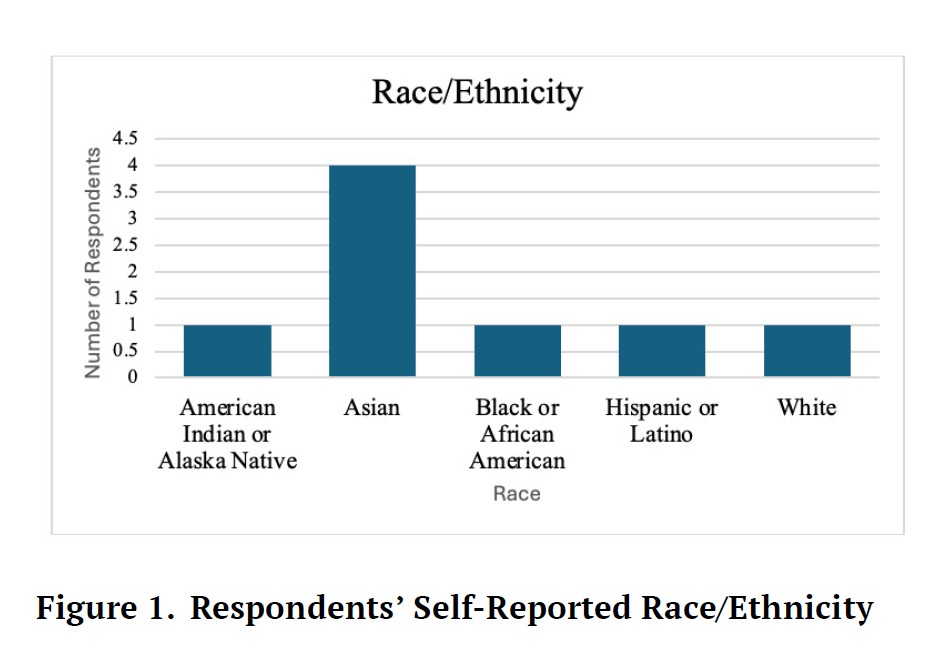
Figure 1.Respondents’ Self-Reported Race/Ethnicity
There were six (75.0%) respondents from a Baccalaureate degree program and two (25.0%) respondents from an Associate degree program. A total of three (38.0%) respondents passed the exam on their first attempt: two of two respondents (100%) from the Associate degree program and one of six (16.7%) from the Baccalaureate degree program (Figure 2).
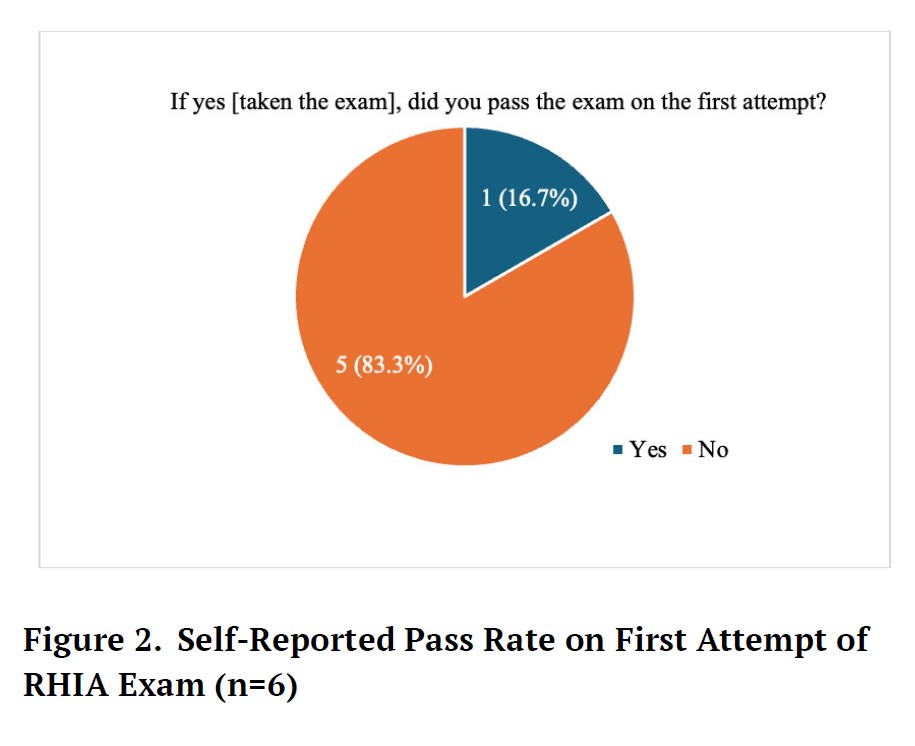
Figure 2.Self-Reported Pass Rate on First Attempt of RHIA Exam (n=6)
Of the five graduates who did not pass on the first attempt, four (80.0%) were not able to complete the exam in the time allotted (Figure 3). Of those, one (25.0%) reported that they completed approximately 75% of the exam and three (75%) reported that they completed more than 75% of the exam.
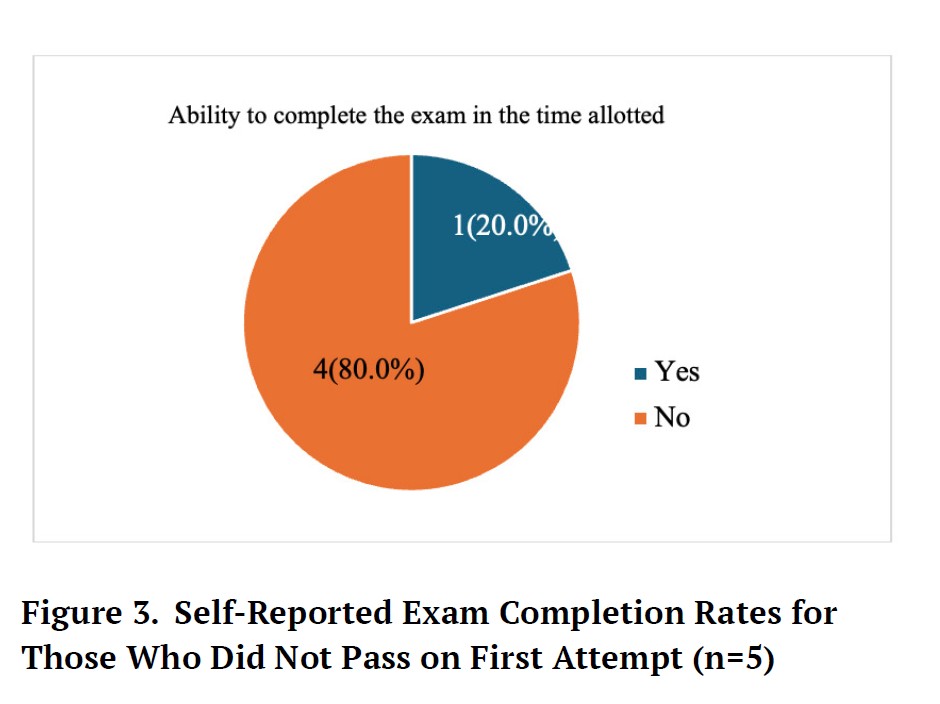
Figure 3.Self-Reported Exam Completion Rates for Those Who Did Not Pass on First Attempt (n=5)
Of all eight respondents, two (25.0%) felt that time did not affect their ability to do their best on the exam, five (62.5%) felt as though time affected their ability to do their best on the exam, and one (12.5%) did not know how time affected their ability to do their best (Figure 4).
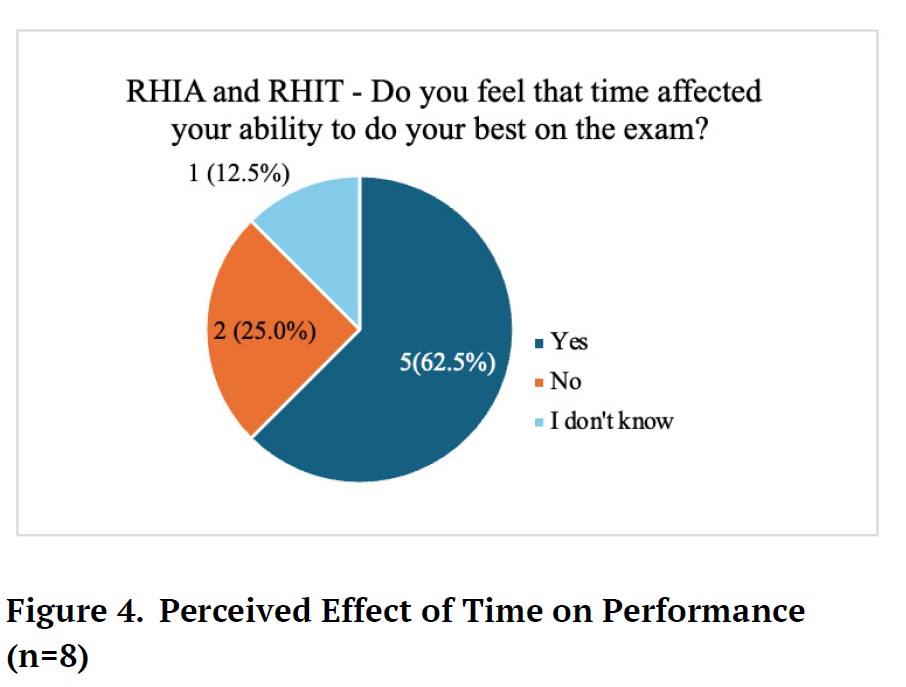
Figure 4.Perceived Effect of Time on Performance (n=8)
No Associate program graduates felt that time affected their ability to do their best on the exam. Of the six Baccalaureate graduates, five (83%) felt that time affected their ability to do their best on the exam (Figure 5).
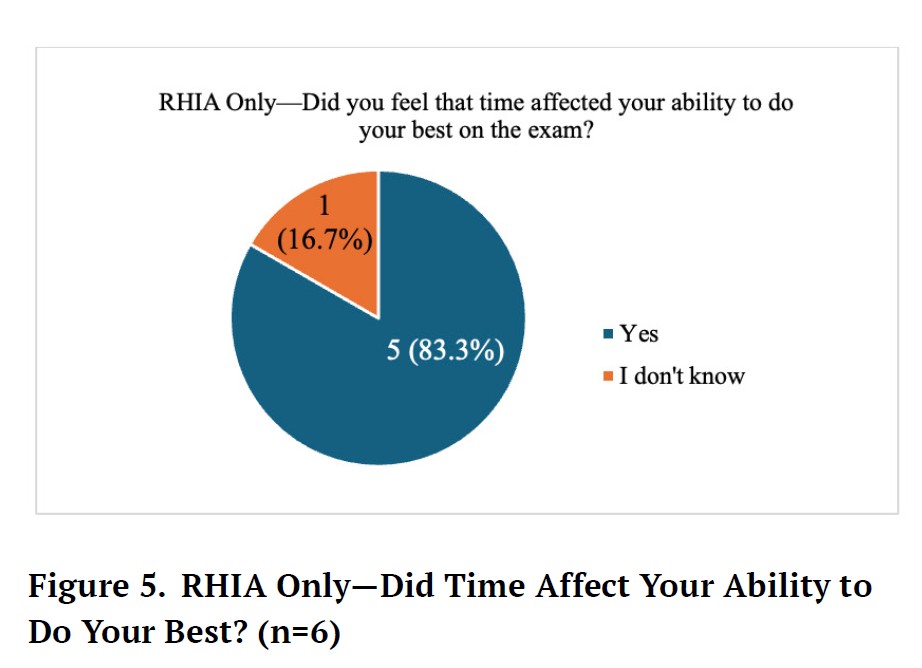
Figure 5.RHIA Only—Did Time Affect Your Ability to Do Your Best? (n=6)
Sixty-three percent (n=5) of respondents felt that the format of the questions (more than one right answer or “choose the best answer”) affected their ability to do their best on the exam and five (63%) of the respondents felt the wording of the questions affected their ability to do their best on the exam.
When asked which techniques were used to determine the best answer in cases in which the graduate was not sure of an answer, six (75%) of respondents stated they were able to get the answers down to two choices and then were able to decide, four (50%) stated they immediately knew some answers were wrong and were able to eliminate them, and four (50%) stated they reviewed each answer and were able to determine some were wrong.
The five Baccalaureate graduates who did not pass the exam on the first attempt were asked further questions regarding subsequent attempts on the exam; one (20.0%) did not retake the exam and four (80.0%) did retake it. The one graduate who did not retake the exam indicated that cost, not needing the certification for their job, and the lack of desire to try again as reasons for not pursuing further attempts to pass the exam. Of the four graduates who retook the exam, two (50.0%) passed and two (50.0%) did not pass. The number of times graduates retook the exam and pass rates can be seen in Table 1.
Table 1.RHIA Exam Retakes and Passing Rates
| Number of Retakes |
Pass |
Fail |
Total |
| Once |
1 |
1 |
2 |
| Twice |
0 |
1 |
1 |
| Three Times |
1 |
0 |
1 |
| Total |
2 |
2 |
4 |
The final set of questions asked participants to provide feedback on how their academic programs could have better prepared them for the exam. Table 2 includes feedback regarding better preparing graduates for the exam. Graduates stated that programs could have helped them better prepare for the exam by providing tests in courses in a format similar to the RHIA/RHIT exam formats, group reviews, more time to study, more study materials, or a review course/session. Graduates stated that providing information about alumni who hold the credentials and how those credentials benefited their career would be one way that programs could encourage graduates to take the RHIT and RHIA exams. Also, additional curricular focus on Informatics and Revenue Cycle could also increase interest in taking the exams.
Table 2.Suggestions to Help Graduates Prepare for the RHIT/RHIA Exam
| Suggestions to Help Graduates Prepare for Exam |
| Tests in courses in format similar to RHIA exam format |
| Group reviews using questions similar to exam questions |
| More time to study |
| More study materials |
| Review course/session |
Discussion
Overall, 37.5% of respondents in this study passed the RHIT and RHIA exams on their first attempt. All RHIT graduates passed on their first attempt, while only 17.0% of the RHIA graduates passed on their first attempt. No clear reason was found for this difference in this particular study. The Associate degree graduates were all (two; 100%) over 35 whereas the majority of the Baccalaureate degree graduates (four; 66/7%) were under 35, which could indicate that maturity or stage of career may be an advantage. Differences in preparation between these two groups for the exam or differences in the exams could contribute to this, or it could be merely coincidental in our relatively small respondent pool. This is an area that could benefit from further research.
For our respondents, time seemed to be the biggest challenge in completing the exam or in doing their best for those who did not pass. A pilot test utilizing extra time could be one solution. Extra time could be allocated in a method similar to that for graduates who are allowed extra time on the RHIT/RHIA based on a “documented disability covered under the Americans with Disabilities Act (ADA) and ADA Amendments Act (ADAAA) and requires test accommodations.”13
Other challenges noted were the format of the questions (more than one right answer or “choose the best answer”) and the wording of the questions. Both were found to affect the ability of the graduates to do their best. These findings align closely with the literature and with other research that noted that time, exam format, and question format were challenges for ELL test takers (P. Klass, oral communication, January 2023). While most graduates did retake the exam, only half passed after subsequent attempts. This may indicate that the challenges faced by these ELL graduates were not resolved simply by familiarity with the exam and question format.
Graduates stated that programs could have helped them better prepare for the exam by providing tests in courses in a format similar to the RHIA/RHIT exam formats, providing group reviews, more time to study, more study materials, or a review course/session. In the Associate degree program at Central Arizona College, all students are required to complete a mock RHIT exam during the final course in the program. A review course is included in the Baccalaureate program. This course has been significantly revised in recent years to include more practice tests in a format like the RHIA exam’s as well as to include more student materials. Future research and review are needed to determine wether these changes have resulted in ELL graduates feeling better prepared for the exam.
The authors also suggest that AHIMA could consider working with their current test proctor, Pearson VUE (Bloomington, MN), to offer test takers change the test language. Pearson VUE does have this functionality, and it could help ELL students be successful in their RHIT or RHIA exam.14
Thea authors strongly recommended to further evaluate the challenges facing ELL HI graduates. Potential research with CAHIIM, AHIMA, Commission on Certification for Health Informatics and Information Management (CCHIIM), or Pearson VUE would be extremely effective. Concerns have been discussed among colleagues at various industry meetings in recent years regarding the low number of graduates taking the RHIT and RHIA exams in addition to concern regarding the low RHIT/RHIA exam pass rates, and ELL is an area with the potential to increase test take rates and test pass rates.
Limitations
This study was sent to graduates of two programs and although we had an overall response rate of 22%, only 13% of those respondents self-identified as a ELL and only 11% completed the survey, yielding a small sample size. Future research that includes a larger number of RHIT and RHIA programs would provide additional data for analysis and result in more generalizable findings and recommendations.
Conclusions
The findings of this research study indicated that ELL graduates face unique challenges on the RHIT and RHIA certification examinations. This research study identified several unique challenges, and the findings point to some areas in which educators, the professional association, and the certification body could help graduates overcome these challenges. While this study was relatively small, the findings indicate the importance of investigating this issue further and implementing changes moving forward. Such changes could aid in providing the opportunity for all HI graduates to successfully obtain certification and move forward with successful HI careers.
Acknowledgements
Thank you to Dr. Patricia Klass, Director of the International Engagement Study Center at Illinois State University, for her insight and advice in the development of the survey instrument for this study.
Disclosures
The authors have nothing to disclose.
Funding
The authors received no funding for this research.
Appendix A
ESL and RHIT/RHIA Exam Research Survey
-
Do you consider yourself to be an English as a Second Language Learner
-
Yes ____
-
No____ (survey ends)
-
Are you eligible for or hold the below certifications:
-
Have you taken the Registered Health Information Technician (RHIT)/Registered Health Information Administrator (RHIA) Exam? (If you have taken both, answer the following based on the first one taken).
-
Yes, RHIA _____ (skip to question 6)
-
Yes, RHIT _____ (skip to question 6)
-
No_____
-
If no, do you plan to take it soon/have it scheduled?
-
Yes ____ (survey ends)
-
No ____
-
If no, why did you choose not to take the Exam? (select all that apply)
-
If yes, did you pass the exam on the first attempt?
-
Were you able to complete the exam in the time allotted?
-
If no, approxiamtely how much of the exam did you complete ?
-
25% ____
-
50%____
-
75%____
-
More than 75%____
-
Did you feel that time affected your ability to complete the exam?
-
Did you feel that time affected your ability to do your best on the exam?
-
Did you feel that any of these test environment or test format issues affected your ability to do your best on the exam? (select all that apply)
-
Ability to mark questions you were unsure about____
-
Ability to go back to complete questions____
-
Environment of test facility____
-
Ease of getting to the test facility____
-
Other____ (please specify ____________________________)
-
Did you feel that any of the following test question issues affected your ability to do your best on the exam? (select all that apply)
-
Format of the questions (Multiple choice)____
-
Format of the questions (more than one “right answer”, choose the “best answer”)____
-
Wording of the questions (were the questions hard to understand)____
-
Fact that the exam was in English _____
-
If you were not sure of an answer, which techniques did you use to try to determine the best answer? (select all that apply)
-
I immediately knew some answers were wrong and was able to eliminate them
-
I reviewed each answer and was able to determine some were wrong
-
I was able to get the answer down to two choices and then was able to decide
-
I guessed
-
Other _________________________________________
-
If you did not pass the exam on the first attempt, did you retake the exam?
-
I passed on the first attempt____
-
I did retake the exam ____
-
I did not retake the exam____ (skip to question 16)
-
If you re-took the exam, how many times did you retake it?
-
If you re-took the exam, did you pass it on a subsequent attempt?
-
If you did not retake the exam, why did you choose not to retake it? (select all that apply)
-
Cost ____
-
Felt wasn’t prepared____
-
Didn’t need the certification for job____
-
Didn’t want to try again____
-
Other____ (please specify ________________________)
-
In what ways could your educational program have better prepared you for the exam? __________________________________
-
If you did not take the exam, in what ways could your educational program have encouraged you to take the exam? ___________________
Bibliography
-
-
2.
Condon J, Barefield A. Assessment of success on the RHIA certification examination: a comparison of baccalaureate program graduates and postbaccalaureate certificate program graduates.
Perspect Health Inf Manag. 2012;9(Fall):1-12.
https://pmc.ncbi.nlm.nih.gov/articles/PMC3510645/
-
-
-
5.
Oliveri ME, Ercikan K, Zumbo B. Analysis of sources of latent class differential item functioning in international assessments.
Int J Test. 2013;13(3):273. doi:
10.1080/15305058.2012.738266
-
6.
Aroke EN, Pereira S, Leonard C, et al. Translation of credentialing examination for providers with English as a second language: An exploratory study.
AANA J. 2022;90(2):91-99.
https://pubmed.ncbi.nlm.nih.gov/35343889/. PMID:35343889
-
7.
Jónsdóttir AA, Kang Z, Sun T, Mandal S, Kim JE. The effects of language barriers and time constraints on online learning performance: An eye-tracking study.
Hum Factors. 2023;65(5):779-791. doi:
10.1177/00187208211010949
-
-
-
-
-
-
-